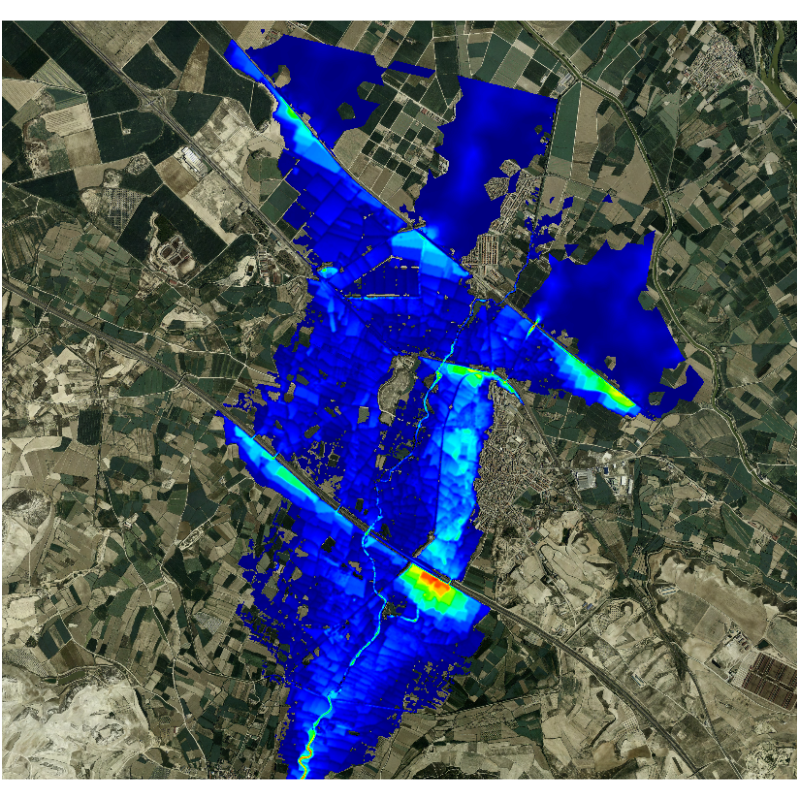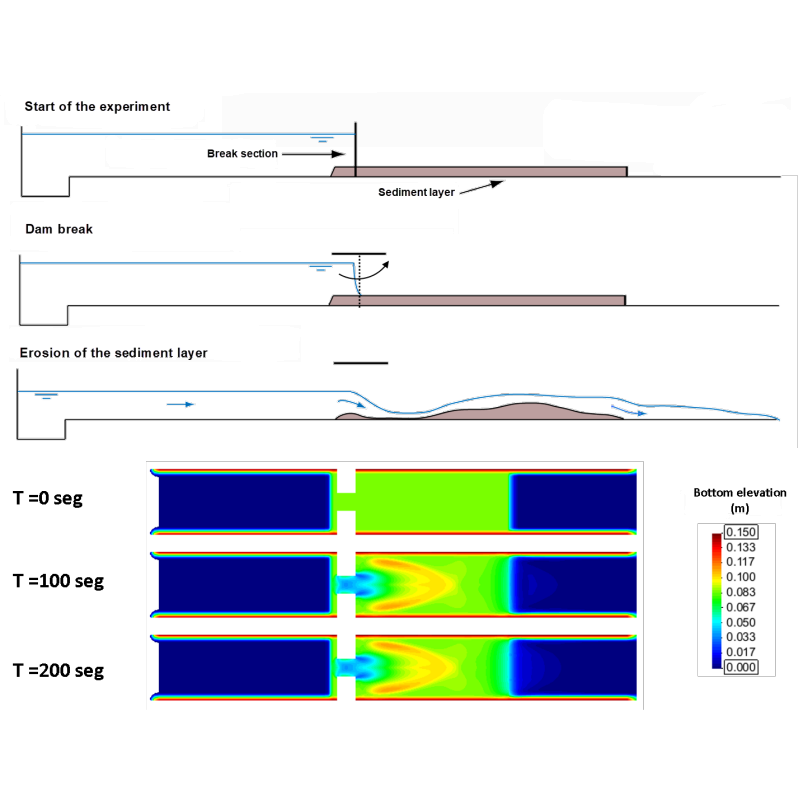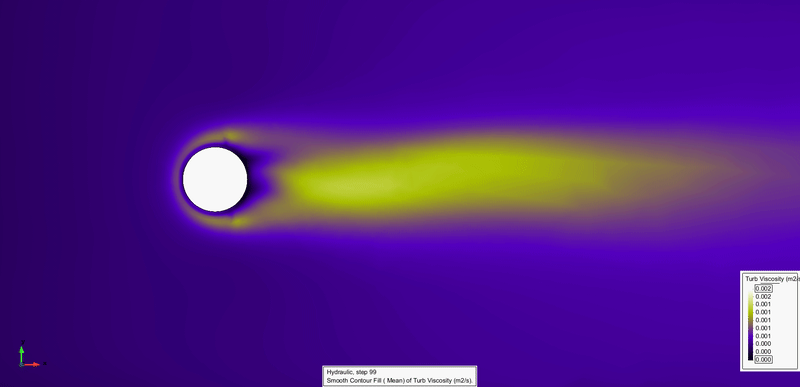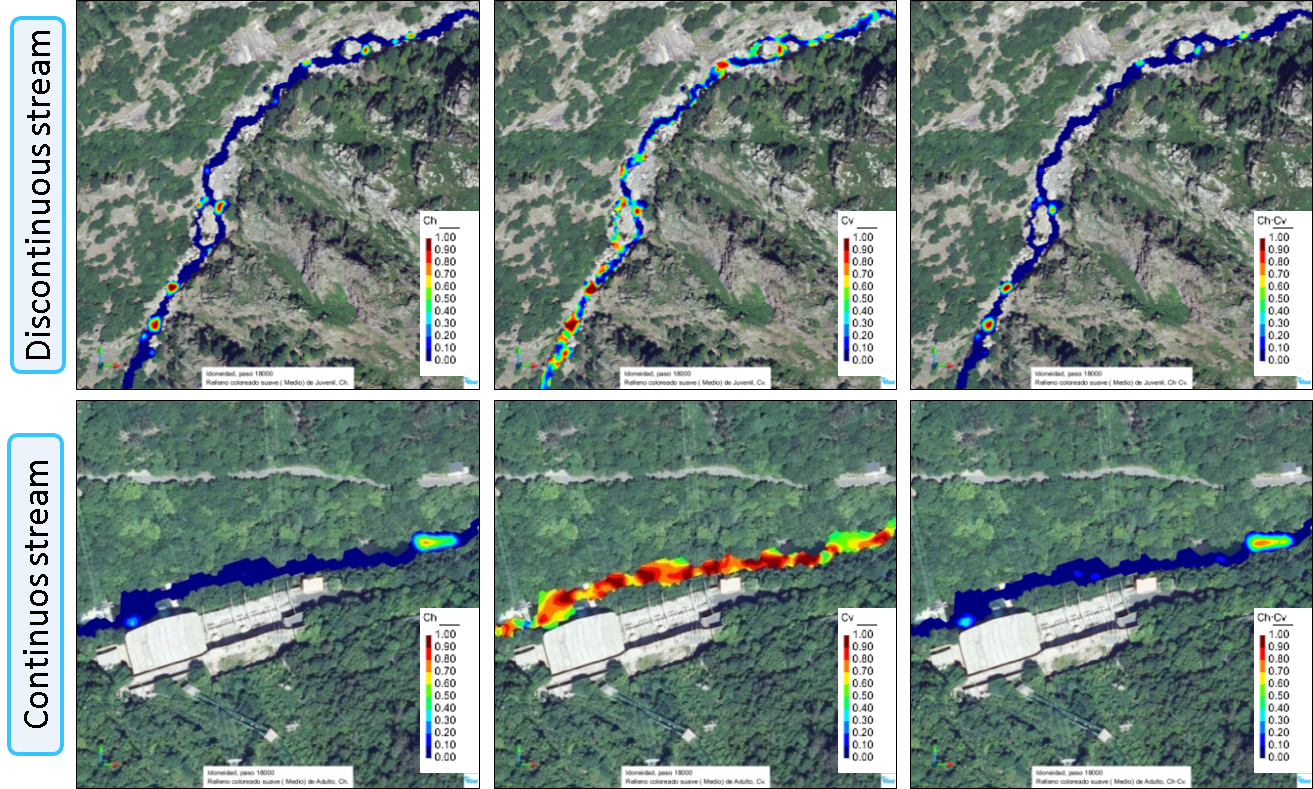About the model
Iber is a two-dimensional numerical model for the simulation of free surface flow in rivers and estuaries. Iber solves the full depth-averaged shallow water equations in order to compute the water depth and the two horizontal components of the depth-averaged velocity. These equations are solved with an unstructured finite volume solver explicit in time. The algorithms implemented in the model have been extensively validated and applied in previous studies related to river inundation and tidal currents in estuaries.
A detailed description of the model, including application and validation examples can be found in Bladé et al. (2014) and the references therein. A free version of the model is available for download at this webpage.
Features
The current features of Iber are:
- Hydrodynamic module based on the 2D Saint Venant equations
- Explicit finite volume schemes on unstructured meshes
- Capacity to solve subcritical and supercritical flows, including unsteady hydraulic jumps
- Mass conservative wetting and drying algorithm
- Several 2D depth-averaged turbulence models
- Internal structures: bridges, gates, weirs, and culverts
- Dam break modelling
- Floodway and flood risk evaluation
- Rain and Infiltration processess
- Wind surface stress
- Bed evolution due to sediment transport considering both, bed and suspended loads
- Fish habitat suitability for Weighted Usable Area (WUA) assesments
- Integrated in a user-friendly interface for pre- and post-processing
- GIS integration
- Verified and validated with analytical solutions, other models, laboratory tests and field measurements
- Paraller computations using HPC techniques GPGPU-based to achieve speedups up to 100 times faster
Numerical schemes
The hydrodynamic equations, as well as the turbulence models and the sediment transport model, are solved with an unstructured finite volume solver.
The characteristics of the numerical schemes used in Iber are the following:
- Conservative finite volume schemes
- High-resolution upwind Roe scheme for solving the shallow water equations
- Ability to solve subcritical and supercritical flow and changes in the flow regime
- Unstructured meshes made up of elements with 3 or 4 faces
- Conservative treatment of wet-dry fronts
- Explicit scheme in time
For a detailed description of the numerical methods implemented in the Iber model you are referred to the technical documents.
Shallow water flows

Flood risk assessment

Dam break modelling

Tidal currents simulation

Sediment transport

Turbulent flows




Pollutants dispersion

Hydraulic structures

Fish habitat suitability

